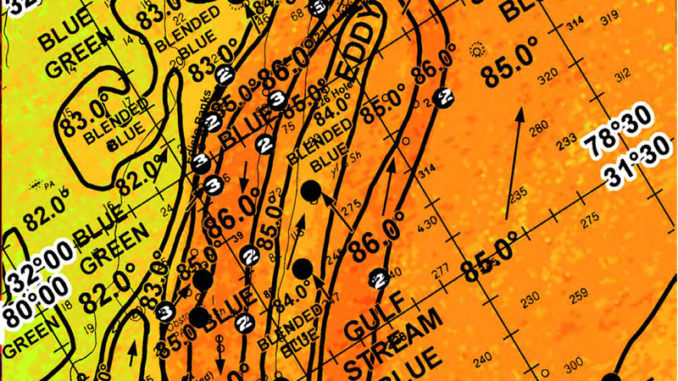
Fishermen should utilize all resources available before making long treks offshore to go fishing. Satellite imaging produces plenty of information that can help locate productive fishing conditions. The information available ranges from free images available from sources like Rutgers University to paid services that monitor multiple satellite images daily.
Roffer’s Ocean Fishing Forecasting Service (ROFFS) has been helping fishermen locate productive waters for more than 30 years and is more than a seawater thermal-imaging service. Oceanographers analyze Gulf Stream temperatures, the position of the Gulf Stream, location and size of eddies spinning off from the Gulf Stream, stability and movement of the Stream and eddies over a couple of days, relationships of currents, water colors, and more to offer their subscribers a service that helps them leave the dock heading for a productive area. This is especially helpful in areas like Long Bay where the trip offshore is typically 60 miles or more.
ROFFS’ oceanographers study multiple satellite shots daily and compare them to reports from fishermen. Fishermen in Long Bay benefit from them seeing strong eddies beginning to form as far south as Florida. From years of experience, oceanographers know what conditions are most conducive to these eddies staying strong, holding bait and being productive when they reach the waters off Long Bay several days later.
Dr. Mitch Roffer, founder and president of ROFFS said, “We have a product that can help the occasional, casual user, but really benefits our subscribers. There are some factors, unique to this area, that combine to produce good and better fishing. Sometimes it is so obvious the factors are coming together just right for excellent fishing conditions, that we notify our subscribers in advance. Yes, we’ve actually sent e-mails telling them they should take a day off work and go fishing. This is a situation where watching the Gulf Stream allows our staff to see things you won’t notice with a cursory 15-minute check late at night. It can mean the difference of running to a spot that is holding fish or missing them by going to an area where the preferred conditions are just forming or are dissipating.”





Be the first to comment